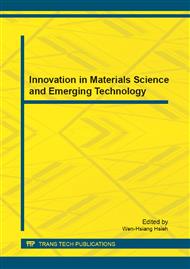p.557
p.562
p.567
p.574
p.579
p.583
p.588
p.593
p.598
A Novel Creative Thinking Model to Pattern Recognition Problem Solving
Abstract:
Inspired by the studies of modern cognitive psychology and real-world pattern recognition systems, a new developed model for pattern recognition is proposed to provide an alternative solution for some complicated pattern recognition problems. This study exploits a creative problem solving (CPS) skill to derive a pattern recognition solution and presents the basic principles, criteria, and techniques for CPS. Next, CPS is devoted to develop pattern recognition application and demonstrate a case study. In addition, this paper discusses the case study on the application of CPS thinking model. Experiment results show that CPS thinking model can improve this application performance of pattern recognition.
Info:
Periodical:
Pages:
598-602
Citation:
Online since:
December 2011
Authors:
Keywords:
Price:
Сopyright:
© 2012 Trans Tech Publications Ltd. All Rights Reserved
Share:
Citation:


